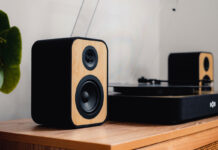It seems that a growing number of Canadians are relying very heavily on streaming services nowadays to get them through their TV watching needs. Netflix is at the forefront of those streaming services, with Emily Jackson of the Financial Post reporting that as of April 2016, 5.2 million Canadian households have subscriptions, nearly 7 times the rate of its next two competitors combined.
Whether you connect to Netflix directly through a Smart TV or a streaming device like a Roku, Chromecast or Apple TV, you have to be sure that your internet connection is firing on all cylinders. For example, if you intend on being ready for the day that most of Netflix’s content is in 4K, you need a minimum constant 25 Mbps connection to keep pace. More importantly though is the fact that your connection is stable and working properly in the first place. If you find that your TV (or something you’re running or playing on the TV) is dropping internet connection frequently, that’s a problem. Don’t let a wonky internet connection get in the way of your ability to enjoy how you watch your streamed movies and TV shows. It may not even be the internet connection itself though. In fact, it may actually be the last thing you need to worry about. Here are a few problems you may be facing though along with how to fix them.
Problem: Your Router’s location
In a larger or awkwardly shaped home, the location of your router is everything. Just because your home office is in a basement or a tucked away corner of your home, it doesn’t mean you need to dock your modem and router there too. Part of the reason your connection is slowing down may be because the signal is hindered by the location. There is too much interfering and bogging the signal down from where it is to reach every device that needs it.
Solution: This solution is two-fold. You could first try to relocate your modem and router to a more centralized place in your home. If this isn’t an option, a range extender would be your next bet. A range extender will draw from your existing connection and help project it to some of the weakest areas of your house. Having a range extender is a good idea for a larger house anyway, but it is also a good idea for an awkwardly shaped space full of walls, doors and things that can interfere with signals.
Problem: Your Router is old
Do you know how old your router is? If your router is older than pretty well all of the devices it’s supporting, that should be a telltale sign that it might be time for a change. Many routers don’t have a power switch which basically means they’re expected to be ready and able 24 hours a day. Imagine running for 24 hours straight for years with your only reprieve being a power outage. Those components will wear down over time, no matter how well ventilated its space is. That may explain some of the outages or drops in service you experience.
Solution: If your router is more than a few years old, it’s time for an upgrade. If you have a single band router, you definitely need to update. If you even have an older dual-band router, it may be still be time to upgrade, especially if you have a lot of devices connecting to it. Nowadays, you can get tri-band routers that will allow you to space out and spread out all of your devices so that your router and connection can handle them.
Problem: Signal Interference
Your TV and Netflix’s connectivity problems may be hampered by signal interference. Not only may you be experiencing many of the problems described above but you may not be able to help it much. A lot of devices broadcasting their own signals might be getting in the way of the one you need. It could be a microwave, a baby monitor, your home phones and even those wireless video game controllers. Even a Chromecast projects its own wireless signal. These are all things that could be getting in the way of your TV or streaming device’s ability to keep connection.
Solution: Short of getting rid of all of the interfering devices, there are a few things you can do here. First, you could move your modem and router closer to your TV. A stronger signal never hurts. If you have a lot of metallic objects directly between your wireless connection and your TV, consider moving them since metal creates some of the strongest signal interference of anything out there.
Problem: Too much traffic
A decade ago, when Wireless networks were becoming common, it was likely that your router didn’t have more than a laptop or two connected to it. Within the last 10 years, we’ve added video game systems, smartphones, tablets and streaming devices to the mix, not to mention how much more our computers rely on constant internet connection. In a typical family of four, it wouldn’t be a stretch to think that there are at least a dozen devices connected to a home wireless network. That’s a lot of load for one router to handle. If wireless signals were traffic lanes, it would be like your router is experiencing constant rush hour.
Solution: Your router might have reached the end of its life expectancy, but don’t worry. There are some great options out there these days. The best option for your wireless signals nowadays would be an air traffic controller that can prioritize who gets the longer runways. Better yet, you need a larger airport with as many runways as possible. For that, the best option is the Linksys EA9500 Max-Stream tri-band router. This router has the skills to maximize the capabilities of your internet connection. In fact, it can support up to 20 simultaneous 4K streaming devices. Plug-in Blogger Matt Paligaru had the opportunity to review the router and it fixed problems in his household full of gaming and streaming devices.
Problem: Your Internet Connection is still slow
If you’ve done everything you can at this point and your internet connection is just too slow, it might be worth checking a few things with the connection itself. Off the top, I had mentioned that there was a minimum buffering need of 25 Mbps to run 4K. If you aren’t running 4K and you’ve still tried just about everything on this list without success, it might be safe to start pointing fingers at your internet connection at this point.
Solution: Solving this problem isn’t instant. It might take a few days to get this sorted out. The first thing you should do is check with your internet service provider (ISP) for a bit of troubleshooting help. They can check the signal strength in your neighbourhood, help you run speed tests and can even come out to repair any broken or damaged cables or pieces. You may also find that your modem is outdated and that your ISP can just supply you with the newest one. Short of that, it may just be time to upgrade your internet connection. That connection might have worked great when you just had your PC and smartphones running off them. With smartphones, tablets and maybe even a Roku or Apple TV or two, you likely need an upgrade. Check with your ISP to see what’s out there and what would work best for your needs.
A wireless network has gone from being a luxury to becoming a must-have in many homes. Without that wireless gateway working like clockwork, our technology would be silenced and, let’s face it, we’ve become so used to what we have now that things just wouldn’t be the same. Hopefully these steps will help fix up any connectivity problems you have. If not, Geek Squad can always come help you get your best system up and running.





